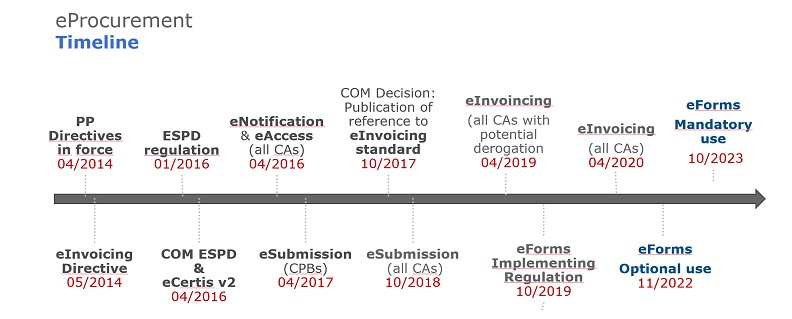ESPD and the decline of the PQQ
Contents |
[edit] Introduction
A pre-qualification questionnaire (PQQ, sometimes referred to as a supplier assessment questionnaire) sets out a series of questions for potential tenderers to answer regarding their level of experience, capacity and financial standing. The answers to these questions enable the client to produce a short list of suppliers that are likely to be most appropriate for their project. Using a pre-qualification questionnaire has the effect of reducing the number of potential tenders to those that are genuinely appropriate for the project, saving a great deal of wasted time for potential tenderers who would not have any realistic chance of winning the contract. It also saves time for the client processing and assessing inappropriate tenders.
Created under the EU 2014 Directive on Procurement, the European Single Procurement Document (ESPD) is used by both buyers and suppliers on public-sector contracts anywhere within the European Union. In submitting an ESPD, the supplier is providing a preliminary indication that their ability, suitability and financial status meet the stated conditions of the procurement process.This means they do not have to provide up-front documentary evidence and the assorted paperwork previously required to show they meet the public authority’s required criteria; they only have to provide such evidence when or if they are selected as the appointed contractor.
[edit] How the ESPD came into force
The ESPD is sometimes thought of as a less complex alternative to a PQQ. The self-regulatory nature of the ESPD allows suppliers to self-declare that they meet the minimum regulatory criteria or commercial capability requirements, and so allows them to progress to the next stage of the process.
Its adoption of ESPD followed different timelines across the UK.
England, Wales and Northern Ireland: On 26 January 2016 all public bodies were required to accept ESPD for all procurements above the EU thresholds under Regulation 59 of the Public Contracts Regulations 2015.
Scotland: On 18 April 2016 all Scottish public bodies were required to issue and accept the ESPD for all procurements worth more than the EU thresholds. This replaced the Scottish standard pre-qualification questionnaire (sPQQ) and any local PQQs used by public bodies.
[edit] Additional important dates
The ESPD’s digital implementation took place across Europe in 2017. The programme is now operating as an online eProcurement method supported by eCertis, a web-based tool that acts as the EU’s repository of certificates required for all public procurement across the EU. The use of paper versions of ESPDs was discontinued in 2018.
The name of ESPD has changed to the Single Procurement Document (SPD) in England; in Scotland, it is SPD (Scotland) There are no additional changes to how it operates.
For more information see: European Single Procurement Document.
[edit] Related articles on Designing Buildings Wiki
Featured articles and news
RTPI leader to become new CIOB Chief Executive Officer
Dr Victoria Hills MRTPI, FICE to take over after Caroline Gumble’s departure.
Social and affordable housing, a long term plan for delivery
The “Delivering a Decade of Renewal for Social and Affordable Housing” strategy sets out future path.
A change to adoptive architecture
Effects of global weather warming on architectural detailing, material choice and human interaction.
The proposed publicly owned and backed subsidiary of Homes England, to facilitate new homes.
How big is the problem and what can we do to mitigate the effects?
Overheating guidance and tools for building designers
A number of cool guides to help with the heat.
The UK's Modern Industrial Strategy: A 10 year plan
Previous consultation criticism, current key elements and general support with some persisting reservations.
Building Safety Regulator reforms
New roles, new staff and a new fast track service pave the way for a single construction regulator.
Architectural Technologist CPDs and Communications
CIAT CPD… and how you can do it!
Cooling centres and cool spaces
Managing extreme heat in cities by directing the public to places for heat stress relief and water sources.
Winter gardens: A brief history and warm variations
Extending the season with glass in different forms and terms.
Restoring Great Yarmouth's Winter Gardens
Transforming one of the least sustainable constructions imaginable.
Construction Skills Mission Board launch sector drive
Newly formed government and industry collaboration set strategy for recruiting an additional 100,000 construction workers a year.
New Architects Code comes into effect in September 2025
ARB Architects Code of Conduct and Practice available with ongoing consultation regarding guidance.
Welsh Skills Body (Medr) launches ambitious plan
The new skills body brings together funding and regulation of tertiary education and research for the devolved nation.
Paul Gandy FCIOB announced as next CIOB President
Former Tilbury Douglas CEO takes helm.
UK Infrastructure: A 10 Year Strategy. In brief with reactions
With the National Infrastructure and Service Transformation Authority (NISTA).























